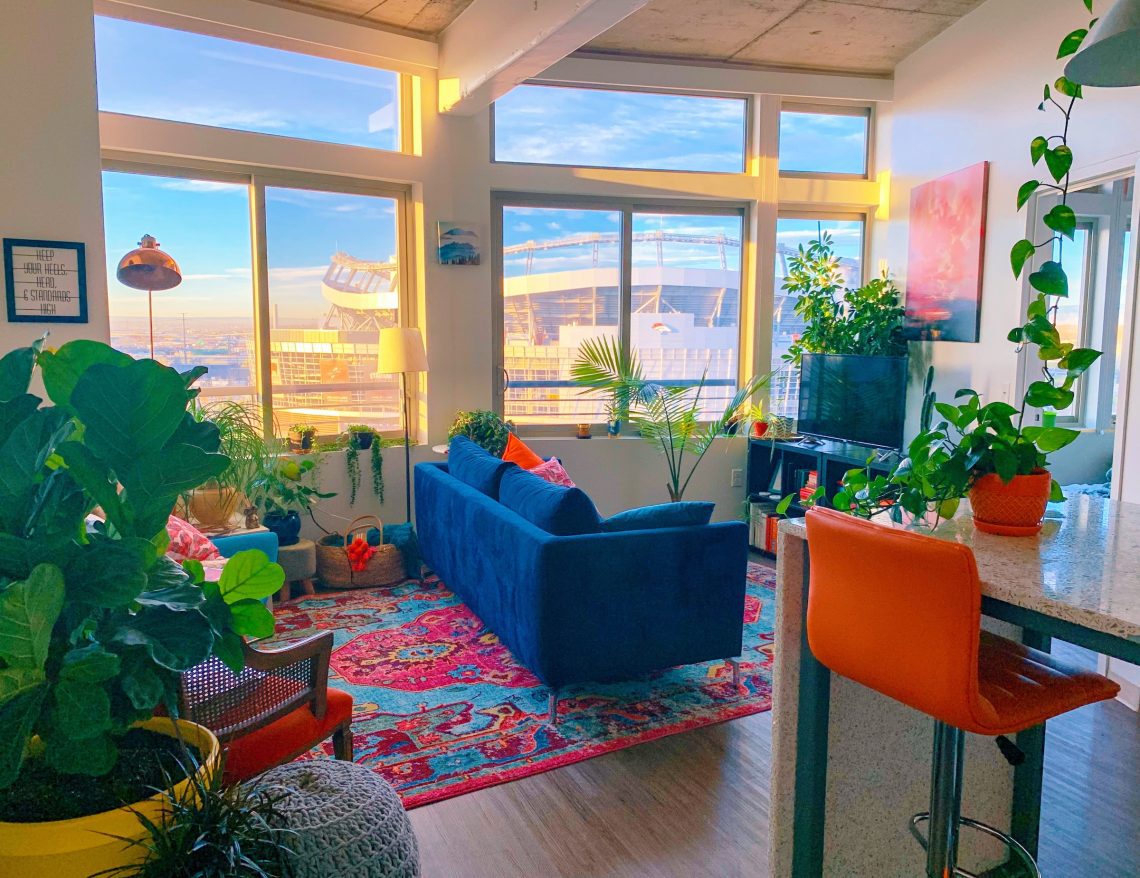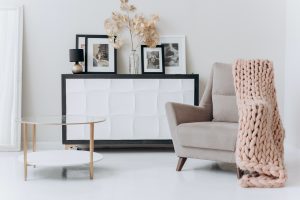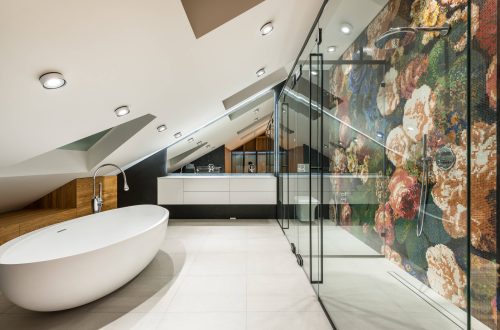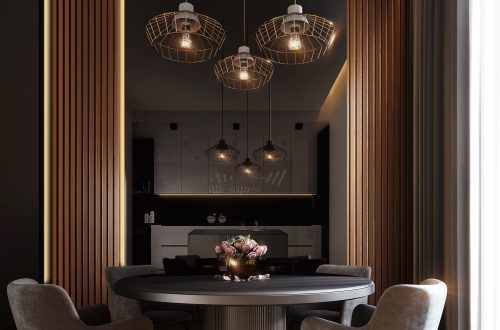
Minimalism vs Maximalism: Which Style Shines the Brightest?
When it comes to interior design, there are two distinct philosophies: minimalism and maximalism. While both approaches offer ways to craft beautiful spaces that feel unique and inviting, each style appeals to different sensibilities, with some opting for a simple, clean aesthetic. In contrast, others prefer an over-the-top look filled with colour and pattern. In this blog post, we’ll take a closer look at the differences between minimalist and maximalist styles – including each approach’s key elements and their relative merits – so you can determine which is suitable for your home’s décor.
What is minimalism in interior design?

Minimalist design is based on the concept of less being more. It’s not just about stripping away all the unnecessary stuff from your home; it’s about creating a tranquil and modern space. In minimalist design, furniture pieces are kept to a minimum, and there are no unnecessary knick-knacks or overly busy patterns. Neutral colours like beige, white, grey, and black are often used as the main palette for minimalist interiors.
In addition to keeping things simple with colour choices and furniture pieces, minimalism also focuses on creating a functional space that works for everyday living. It means selecting furniture pieces that serve multiple purposes or investing in multi-functional pieces such as modular sofa beds or wall-mounted desks. Even if you don’t have much space to work with, you can still use minimalist principles to create a stylish yet practical home environment.
A brief history of minimalist interiors
Minimalism in Ancient Times
The concept of minimalism can be traced back to ancient Greece and Rome, where minimalist interiors were seen as an expression of wealth, power, and status. These early designs emphasised simplicity, clean lines, and functionality—all hallmarks of modern minimalist interiors. But unlike modern minimalist homes, these ancient homes featured intricate details like marble columns and decorative mosaics that added texture to the overall design.
Renaissance Minimalism
During the Renaissance, minimalism was largely represented by symmetrical layouts focused on proportions rather than decoration. This style relied heavily on geometry and natural shapes to create balance within a space. It also incorporated elements like stone fireplaces, large windows with shutters, and tapestries that added visual interest but kept the aesthetic simple.
Modern Minimalism
Modern minimalism is about stripping unnecessary elements from space while making it feel cosy and inviting. This type of design emphasizes neutral colours like white, black, grey, or beige and materials like metal or wood that add texture without detracting from the room’s overall look. Furniture tends to be streamlined with simple details like tapered legs or geometric shapes that bring focus to the pieces without overwhelming them. Artwork is kept to a minimum so that each piece stands out on its own without competing for attention with other pieces in the room.
Benefits of minimalist interiors
Minimalism is about stripping down our lives only to include necessary and meaningful things—which means less stress. By removing unnecessary possessions, we free up time and energy for activities that bring us joy, such as spending time with family or engaging in hobbies. Even just the act of decluttering can have a positive effect on stress levels.
Reducing the amount of stuff we own gives us more physical space to do the things we love—whether having friends over, engaging in creative projects, or simply relaxing in our home environment. With less clutter, there is more room to move around freely and enjoy making memories with loved ones.
Moreover, the beauty of minimalism lies in its simplicity. When done right, minimalist interiors evoke feelings of peace and serenity—perfect for unwinding after a long day or starting your morning on a good note. A well-designed minimalist interior will also make your home look bigger because there is less visual clutter taking up space in each room.
What is maximalism in interior design?

Maximalism in interior design is a bold and maximal style which seeks to make a maximal statement with colour, furnishings, artwork and textures. It involves maximal layers of patterns, colour palettes and design features. This maximal approach allows maximalists to play with their creative side, mixing traditional and contemporary styles. Maximalist interiors tend to feature exuberant decor elements which create depth and emotion.
Unlike minimalistic designs, maximalism advocates for expressing personal values through maximal styling choices — colourfully-painted walls, elaborate tapestries and ornate furniture pieces. By accenting sparsely decorated spaces with maximalist accents, maximalists can enjoy the spaciousness of a minimalist-style room while still maintaining their personality with richer decorative elements.
A brief history of maximalist interiors
Baroque Period (1600-1700)
During the Baroque period, maximalism was in vogue among Europe’s wealthy classes. The era was marked by ornate décor featuring elaborate ceiling frescos and gold-plated furniture. While some pieces were meant to be functional, many were purely decorative. The goal was to create environments that were as visually stimulating as they were comfortable.
Victorian Era (1837-1901)
Towards the end of the 19th century, maximalism underwent some evolution. The Victorians embraced darker colours such as burgundy and navy blue and intricate floral patterns inspired by nature. Furniture became more ornate than ever, especially with bed frames and headboards adorned with carved wood or velvet tufting. Plush carpets were also popular; many homeowners opted for wall-to-wall carpeting to create a luxurious atmosphere inside their homes.
Modern Maximalism (2000s)
Maximalism has experienced a resurgence in recent years, particularly in the early 2000s. Homeowners began to embrace bright colours and daring patterns; loud prints and unexpected colour combinations are now commonplace. Maximalists also enjoy playing with different textures such as silk, velvet and fur to create an indulgent atmosphere. The goal is to create spaces that are stimulating yet comfortable, with maximalists often opting for oversized furniture pieces and statement artwork to complete the look.
Benefits of maximalist interiors
Maximalism is about embracing bold patterns, bright hues and unique pieces that make your home stand out from the rest. This style allows for experimentation and creativity when selecting paint schemes, furniture choices, accessories, etc. A maximalist interior provides endless opportunities for expression, allowing you to show off your personality in your own space.
Maximalism does not just focus on aesthetics; it also serves a functional purpose. Using multiple items in one space creates a more organized look that helps keep clutter at bay while keeping everything within arm’s reach. It makes finding things easier while ensuring nothing looks out of place or cluttered with too many items in one spot. And if you are looking for extra storage space—maximalism can help with that too! By utilizing furniture pieces with hidden drawers or built-in shelves, you can ensure everything has its designated spot without sacrificing aesthetic appeal.
Similarly, the maximalist interior design encourages comfort by creating an atmosphere filled with colour and personality – perfect for unwinding after a long day or enjoying quality time with family members or friends. It adds warmth to any room while also making it inviting enough to welcome guests without feeling like you have to change anything first! Plus, the extra layers add texture, making any space feel cosier than before—perfect for those cold winter days when you only want to curl up on the couch with a good book or movie!
Why are minimalist interiors falling out of fashion?

Minimalist interiors have been trending for some time, but why are they now becoming less popular? While minimalism is certainly not going anywhere soon, maximalism has been on the rise in interior design. Characterised by maximal ornamentation, maximalism seeks to make interiors exciting and vibrant with contrasting colours, textures and patterns.
In contrast to its minimalistic predecessor, maximalism creates a much more stimulating space that combines daring elements. This newfound embrace of maximalism has made people reconsider their minimalist designs as being too plain or generic. More people are now looking for bold spaces that demonstrate who they are and reflect their individual styles. As maximalism’s popularity grows, minimalist interiors will likely become less popular for homeowners seeking unique interior designs.
Conclusion
Maximalism and minimalism are both popular design styles, but which is the best? It depends on what you’re looking for. If you want a style that makes a statement and looks luxurious, then maximalism is the way to go. However, if you prefer a clean look that is simple and elegant, then minimalism is your best bet. Whichever style you choose, make sure it reflects your unique personality so that your home feels like a true reflection of who you are.




